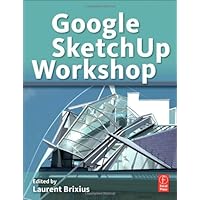
Average Reviews:

(More customer reviews)Terry Therneau is a research statistician at the Mayo Clinic and Patricia Grambsch is a Professor of Biostatistics at the University of Minnesota. The Cox proportional hazards model has been one of the key methods for analyzing survival data with covariates for the last 25 years. Proportionality is a key assumption that limits its use. There has long been a need to find methods which diagnose when the hazard rates are not proportional and provide alternative methods in such situations. Using the theory of counting processes the authors are able to extend the Cox model to more general situations including multiple/correlated event data using either marginal models or random effects (frailty) models. Time dependent covariates are also covered. Some of the theory of martigales and counting processes is included to make the book self-contained. Generalized residuals are used to identify outlying and influential observations (analogous to ordinary regression) and also to assess the proportional hazards assumption.
Although the topics are advanced and the mathematical level is high the book is designed for practitioners, emphasizing applications and providing numerous examples, many from the authors' experience. Statistical analyses are done in SAS and SPlus. The authors tend to use SAS for data management and analysis and SPlus for diagnostics and other plots. Therneau is an expert programmer who has written much of the necessary software in both systems.
Therneau gave an excellent short course that I attended a couple of years ago at the Joint Statistical Meetings based on a draft of the text. The finished product is as good as I expected.
The appendices include SAS and S-Plus tutorials on survival analysis and provide SAS Macros and S functions to apply the new methodology.
The book is now (December 2008) in its 6th printing which is another testament to its value and popularity and a nice deal at amazon's current price of $87. But O'Quigley's book is out now too. So maybe Terry and Patricia should be thinking about doing a revision if they don't already have one in the works.
Click Here to see more reviews about: Modeling Survival Data: Extending the Cox Model (Statistics for Biology and Health)
This book is for statistical practitioners, particularly those who design and analyze studies for survival and event history data. Building on recent developments motivated by counting process and martingale theory, it shows the reader how to extend the Cox model to analyze multiple/correlated event data using marginal and random effects. The focus is on actual data examples, the analysis and interpretation of results, and computation. The book shows how these new methods can be implemented in SAS and S-Plus, including computer code, worked examples, and data sets.



















